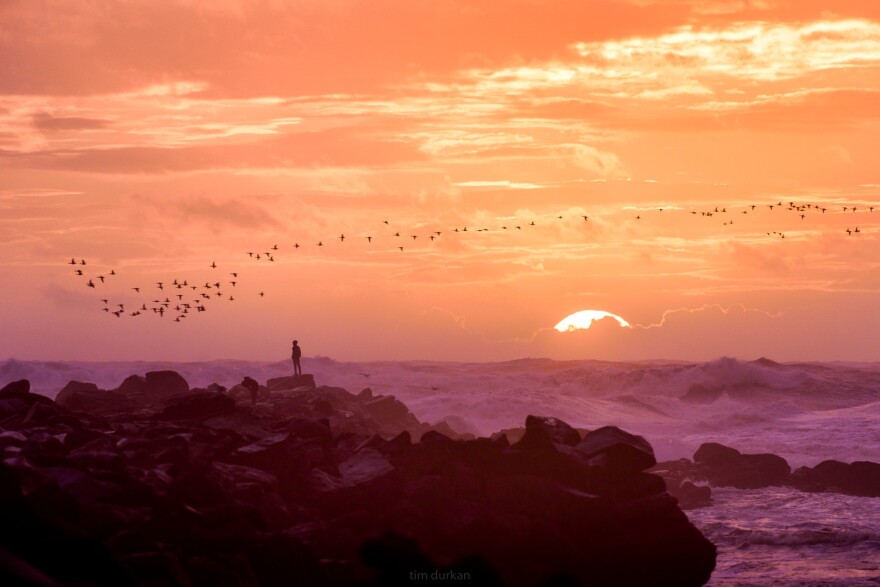As May begins, the weather continues to offer that typical grab bag of conditions that is typical for spring in the Northwest: plenty of clouds, along with showers, sunbreaks, even possible thunderstorms. And often, forecasts predict the probability of these phenomena: a 10 percent chance of rain, say — or 50 percent chance.
That sounds plausible, but it turns out most people don’t know what that actually means.
PROBABILITY FORECASTS MISUNDERSTOOD
“There’s been studies, of all kinds of people — whether they knew what it was. Only about a third of the population know what it means,” KNKX weather expert Cliff Mass said.
He was responding to a question emailed to me by a Seattle listener, who said the issue has nagged at him for a long time.
“When I hear a prediction of a 10 percent chance of rain, I always wonder if that means there's a 1-in-10 chance of rain at some time during the day, or that we'll get rain for 2.5 hours in the next 24,” Andrew Joslin wrote.
“That’s a really good question,” said Mass, adding that he’s always delighted to hear from listeners.
“When there’s a 30 percent chance of precipitation, it’s not 30 percent of the time or 30 percent of the area,” he said. “What it means is, 30 percent of a certain period — generally a 12-hour period — the chance of precipitation at a particular point.”
So, as an example, Mass says, if you hear of a 30 percent chance of rain tomorrow afternoon in Seattle, that means at a specific place, such as Seattle-Tacoma International Airport, for the 12 hours around that time.
PARTLY SUNNY VS. PARTLY CLOUDY
Another source of potential confusion, Mass says, is with the terms “partly cloudy” and “partly sunny.”
“They are the same thing,” he says. When the National Weather Service uses those terms, their expectation is identical. “That the sky coverage will be somewhere between three-eights and five-eighths of the sky – so roughly half of the sky is going to be covered with clouds.”
Mass added that it is a standard meteorological convention is to work in "octals," or eighths, of the sky, “and that’s why every definition is in terms of eighths,” he said.
APRIL RAINFALL UPDATE
Earlier in April, the weather was so dry, it looked like the state was headed toward a record. But Mass says precipitation caught up nicely by the end of the month.
“So right now we’re about three-quarters of an inch below normal,” he said Thursday. “That takes us from possibly being the driest April on record to about the 25th driest on record — so, we’re a little drier than normal, but it’s nothing too exceptional.”
After a check of the records on Friday morning, Mass confirmed it is now officially “the 20th driest, since 1945.”


